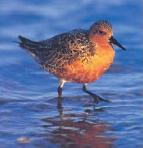The researchers calculated that since 1500 -- the beginning of the major period when Europeans began exploring and colonizing large areas of the globe -- birds have been going extinct at a rate of about one species per year, or 100 times faster than the natural rate. According to a recent article, human activities have raised the rates of bird extinction well above what they would be without human interference.
According to a recent article, human activities have raised the rates of bird extinction well above what they would be without human interference.
The cases of the dodo and passenger pigeon are classic examples of hunting pressure leading to extinction. But species do not end solely because of hunting, and a reasonable level of predation can be tolerated by most species. The real problems are usually habitat destruction and degradation. A species with a small range or very specific needs is particularly at risk of habitat; this is one reason the destruction of rainforests causes so many extinctions. Long-distance migrants are also at risk because they need habitat for wintering, migration, and breeding. The red knot appears to have been harmed on all three counts, but especially on the vital middle link in its migration route. Climate change, of course, will be an aggravating factor in species loss in the future.And the rate has been faster in recent times. "Increasing human impacts accelerated the rate of extinction in the 20th century over that in the 19th," the report said. "The predominant cause of species loss is habitat destruction." ...
The new assessment considerably exceeds previous scientific estimates that 154 bird types disappeared during that past 500 years, according to the researchers.
One factor contributing to such large differences in estimates is that "more than half of the known species of birds were not discovered until after 1850, an important point that previous estimates of extinction rates have failed to take into account," Raven said. "One can't register a bird as extinct if it was not known to exist in the first place."
The authors of the piece advise better policies to prevent extinctions.
Read the rest.The new report is not all bleak, Pimm said. "The good news in this report is that conservation efforts are reducing extinction rates to about one bird species every three or four years," he said, but he added that even this improved rate "is still unacceptable."
Of the 9,775 known species of birds, "an estimated additional 25 would have gone extinct during the past 30 years if it were not for human intervention," Raven said.
Despite conservation efforts, "some 1,200 more species are likely to disappear during the 21st century," he warned. "An equal number are so rare that they will need special protection or likely will go extinct, too."



